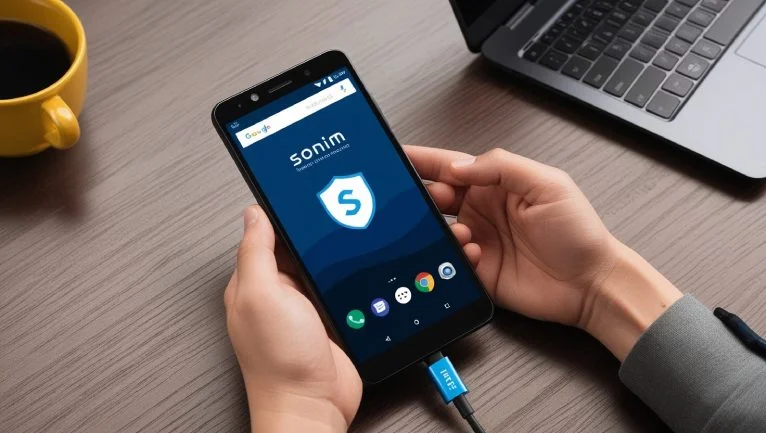Sonim Technologies produces rugged mobile devices designed for durability and functionality, particularly in challenging environments. Like many smartphones, Sonim devices require regular software updates to improve performance, security, and features. While updates can often be performed over-the-air (OTA), using ADB (Android Debug Bridge) and Fastboot can provide a more controlled method, especially when dealing with issues like boot loops or when the device isn’t responding properly. This guide will walk you through the process of updating your Sonim device via ADB and Fastboot, ensuring a smooth and effective experience.
1. Understanding ADB and Fastboot
1.1 What is ADB?
ADB is a versatile command-line tool that allows you to communicate with your Android device from your computer. It enables users to perform a variety of actions, including installing and debugging apps, accessing device files, and executing commands directly on the device.
1.2 What is Fastboot?
Fastboot is a protocol used to modify the Android file system from a computer when the device is in bootloader mode. Fastboot can flash images, recoveries, and update firmware directly to the device. This is especially useful for users who want to install custom ROMs, recoveries, or official updates manually.
1.3 Why Use ADB and Fastboot?
Using ADB and Fastboot can be beneficial for several reasons:
- Control: You can control the update process without relying on potentially unstable OTA updates.
- Troubleshooting: If your device is stuck in a boot loop or not functioning properly, these tools can help recover or reset the device.
- Customization: For users who want to customize their devices, ADB and Fastboot provide the necessary tools to install custom ROMs and recoveries.
2. Prerequisites
Before you start the update process, make sure you have the following:
2.1 Required Software
- ADB and Fastboot Tools: Download the latest version of ADB and Fastboot. You can find these tools as part of the Android SDK or as standalone packages available on various developer websites.
- Sonim USB Drivers: Ensure that you have the proper USB drivers installed for your Sonim device. This will allow your computer to recognize the device when connected.
- Firmware Update: Download the latest firmware update for your Sonim device from the official Sonim website or trusted sources. Ensure that the firmware is compatible with your specific device model.
2.2 Device Preparation
- Backup Your Data: Before performing any updates, back up your data to avoid losing important files. This is crucial, especially when flashing new firmware, as it can sometimes erase existing data.
- Charge Your Device: Make sure your Sonim device is charged to at least 50% to prevent it from shutting down during the update process.
- Enable Developer Options: To enable USB debugging, go to Settings > About Phone and tap on Build Number seven times. This will enable Developer Options in the settings menu.
- Enable USB Debugging: Go to Settings > Developer Options and enable USB Debugging.
3. Installing ADB and Fastboot
3.1 For Windows
- Download the ADB and Fastboot package and extract it to a folder on your computer.
- Open the Command Prompt by pressing
Win + R, typingcmd, and hitting Enter. - Navigate to the folder where you extracted the ADB and Fastboot files using the
cdcommand. For example:
3.2 For macOS and Linux
- Open the Terminal application.
- Use the
cdcommand to navigate to the directory where you have the ADB and Fastboot files.
3.3 Verifying Installation
To verify that ADB is installed correctly, connect your Sonim device to your computer via USB. In the command line or terminal, type:
If your device is listed, ADB is set up correctly.
4. Updating Your Sonim Device
4.1 Booting into Fastboot Mode
- Power off your Sonim device completely.
- Press and hold the Volume Up and Power buttons simultaneously until the Fastboot screen appears. Release the buttons.
4.2 Connecting to Your Computer
Once in Fastboot mode, connect your device to the computer using a USB cable. In the command line or terminal, type:
Your device should appear in the list. If it does, you are ready to proceed.
4.3 Flashing the Firmware
- Transfer the Firmware: Move the downloaded firmware files to the folder containing your ADB and Fastboot files.
- Flash the Firmware: Depending on the type of firmware file you have, you may need to flash several partitions. The most common commands include:
- To flash the boot image:
- To flash the recovery image:
- To flash the system image:
- To flash the userdata image (this will erase all data):
- To flash the entire firmware (if available as a single file):
Note: Ensure that you replace
boot.img,recovery.img,system.img, anduserdata.imgwith the actual names of the files you downloaded.
4.4 Rebooting Your Device
After flashing the required images, reboot your device by typing:
Your Sonim device will restart, and the new firmware should be installed. The first boot may take longer than usual, so be patient.
5. Troubleshooting Common Issues
5.1 Device Not Recognized
If your device is not recognized during the ADB or Fastboot process, try the following:
- Ensure that the USB drivers are correctly installed.
- Use a different USB cable or port.
- Restart both your computer and the Sonim device.
5.2 Stuck in Boot Loop
If your device is stuck in a boot loop after flashing, consider performing a factory reset via recovery mode:
- Boot into recovery mode by pressing and holding the Volume Up and Power buttons.
- Use the volume buttons to navigate to the Wipe Data/Factory Reset option and select it with the Power button.
5.3 Error Messages During Flashing
If you encounter error messages during the flashing process, ensure that:
- You are using the correct firmware for your specific Sonim model.
- The files are not corrupted. Try re-downloading the firmware.
- Your device is in the correct mode (Fastboot).
6. Conclusion
Updating your Sonim device via ADB and Fastboot can seem daunting, but it provides a powerful way to ensure your device runs the latest firmware, especially in situations where OTA updates are unavailable or problematic. By following the steps outlined in this guide, you can effectively manage the update process, troubleshoot common issues, and maintain your device’s performance. Always remember to backup your data before making significant changes and ensure that you follow the instructions carefully to avoid any complications. With the right preparation and knowledge, you’ll keep your Sonim device running smoothly and efficiently.




